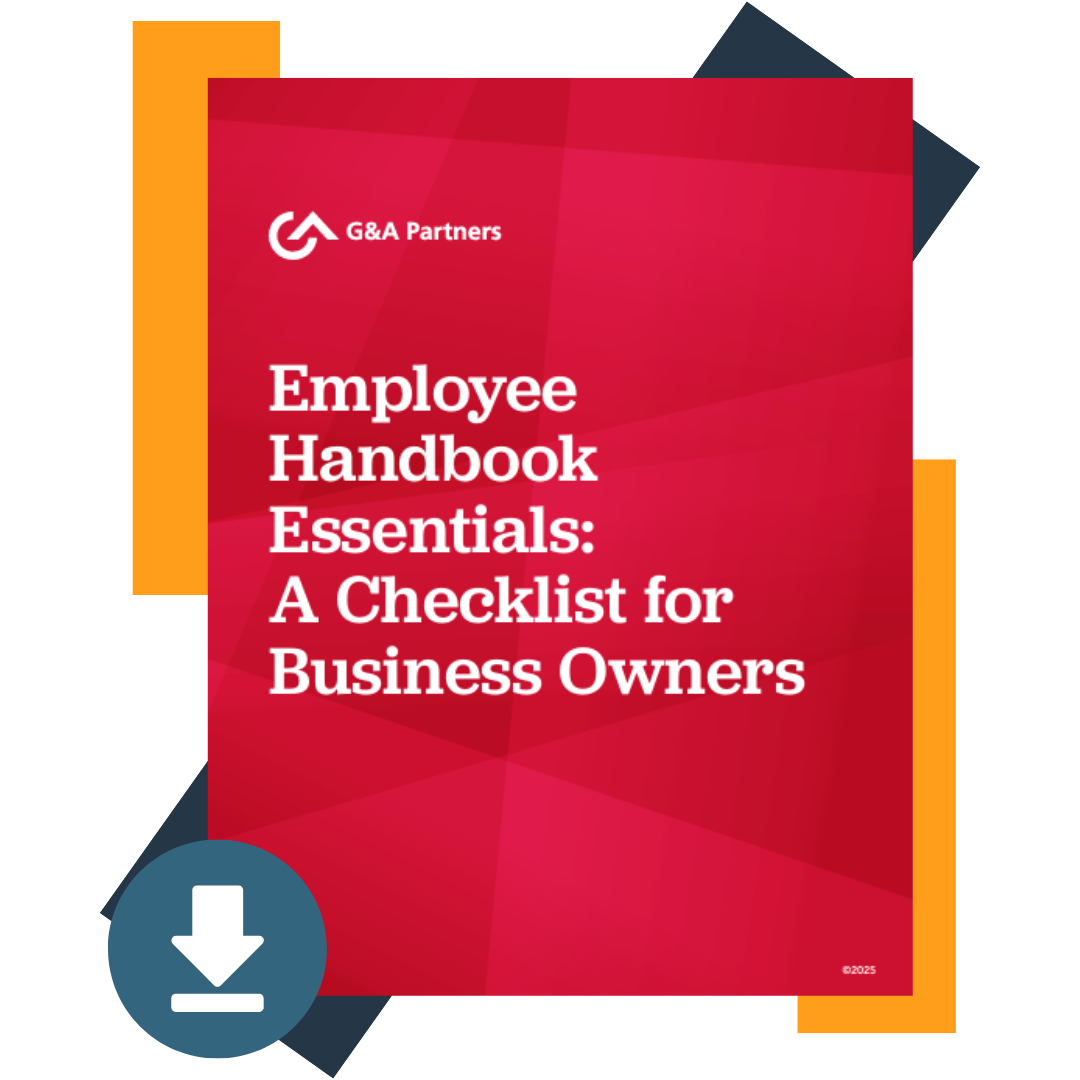Your employee handbook is as unique as your company’s mission, brand, and vision, and it defines how you operate in today’s dynamic labor market. It’s also a vital tool that houses a comprehensive database of policies, procedures, and guidelines, and it serves as a roadmap for your company’s HR compliance training.
According to Thomas Reuters’ “Employee Handbooks: Best Practices,” though not mandated by law, an employee handbook is indispensable because it:
- Explains an employer’s workplace expectations and potential consequences of failure to comply with the employer’s practices and procedures
- Demonstrates an employer’s compliance with employment laws
- Answers common employee questions
- Minimizes the risk of legal claims by encouraging resolution of workplace issues through internal complaint procedures
As a living document, an employee handbook should be updated regularly to reflect changing rules, laws and practices that affect the workplace. The information should be introduced during the employee onboarding process, and employees should be notified each time the company updates or revises its handbook.
Because an employee handbook is such an important tool for today’s business owners, G&A Partners’ HR experts have weighed in on recommendations and procedures you can put in place to ensure your handbook covers all bases and is a valuable resource for your employees.

How important is your employee handbook when it comes to HR compliance?
Within your employee handbook, HR compliance is an essential element. This means that your handbook should include (and explain) required and expected rules and regulations employees and your company must adhere to while on the job.
Our HR experts recommend including the following sections in your employee handbook:
- Relevant federal, state, local, and company-specific policies, such as an anti-harassment and non-discrimination policy
- Company code of conduct, which covers expectations regarding interoffice behavior and disciplinary actions resulting from inappropriate employee behavior
- Employee onboarding and offboarding procedures
- Performance review processes, including goal-setting expectations, review procedures, rewards and performance improvement plans
- Company programs, such as sick leave and paid time off (PTO)
- Health, safety, and data security protocols
- Social media and intranet policies that establish how these mediums are accessed and used on company devices
- Grievance procedures, which detail avenues available to employees to raise concerns and file complaints
- A hybrid work policy that incorporates guidelines and procedures for employees working at the workplace or in remote locations
- Your company’s values, history and mission
In addition to serving as a step-by-step HR compliance handbook, your employee handbook should put protections in place for your employees and your business.
How handbooks protect employees
An employee handbook is a one-stop-shop for information about your company’s culture, mission, and values, and it should be available in a permanent, easy-to-reference place.
According to Rebecca Chmielewski in the Prinz Law Firm’s “Employment Handbooks Can Protect Both Employees and Employers”, “Clear and open communication of these things from the beginning is more likely to gain buy-in from employees with the organization’s ultimate goals and to promote a collaborative working environment, which can reduce workplace friction and maintain or even increase productivity.” She further states, “Communicating these issues can even encourage feedback and create a dialogue that builds trust between employers and employees.”
By clearly defining employer expectations, your employee handbook furnishes workers with guiding principles they can rely on in their day-to-day work and when facing challenging situations. For example, your company’s code of conduct provides a framework for supervisors to follow when addressing employee misconduct. It is a step-by-step guide that helps mitigate the risk of litigation and exposure to claims alleging discriminatory practices or other unlawful conduct.
“When implemented and enforced effectively and consistently, the corporate policies contained in a company’s employee handbook help demonstrate that a company is operating ethically and proactively for the benefit and safety of its employees and the public,” said Kelley Zanfardino, a compliance manager at G&A Partners.
How handbooks protect employers
Employee handbooks make company policies easily accessible to employees and allow companies to apply and enforce those policies consistently.
Below are some tips to keep in mind when creating your employee handbook:
- Keep it simple and straightforward. Use a positive tone and simple language. Avoid legal jargon or confusing terminology. If a large percentage of your workforce speaks another language, consider having your employee handbook available in two languages.
- Know what’s required to include by law. While it’s not mandated by law to have an employee handbook, some states may require that certain policies be included in a handbook. Others require that a specific law be included if you have a handbook. Some state and federal laws and regulations, such as nondiscrimination and anti-harassment, require that you have policies and procedures outlined in writing for your employees. A handbook gives employees a central location to locate these policies and procedures.
- Consider state-specific handbooks. If you’re operating in multiple locations or have remote employees in other states, you may need a state-specific handbook to reflect laws and regulations for each location.
- Make sure your employees understand what the handbook is and what it isn’t. While your employee handbook may include information about policies required by law, it should not be presented as a legally binding document or contract. To avoid confusion, consider including a disclaimer section at the beginning of the handbook stating that it is not an employment contract. You might also want to include a section stating that the policies included in the handbook take precedence over any previous policies that have been updated since past employee handbook printings.
- Update your handbook regularly. Employee handbooks should include all relevant federal, state, local, and company-specific policies. Importantly, your company should conduct regular reviews and make updates when changes are made to those regulations. If your company has expanded into new states, add that information to employee handbooks as soon as possible. Communicate to employees that the handbook is a “living” document and that policies and information are subject to change.
- Periodically remove outdated procedures, policies and information. When conducting an employee handbook review, watch for obsolete policies, procedures and information that no longer pertain to your workplace and workforce. Remove outdated information – if it is not governed by applicable laws – and notify employees about the change(s) on paper, via email, or on the company intranet.
- Obtain employee acknowledgments. When your employee handbook is distributed to a new employee during onboarding or when a new or updated policy is communicated, ensure every employee signs and returns an acknowledgment form. These forms acknowledge that an employee has received, reviewed, and agreed to comply with the employee handbook’s policies and procedures and updates as well. A professional employer organization (PEO) like G&A Partners has HR technology that streamlines this process so that your employees stay informed and your business is protected.
Does a small business need an HR department?
The protections that an employee handbook provides your business – and workforce – help ensure the longevity of your business. However, keeping up with the continual process of creating, maintaining and updating your handbook is challenging, particularly if you have a multistate workforce.
Multitasking is a must when you own your own business. Most small business owners fill most—if not all—of their company’s roles, especially in the early years. But, as your sales and responsibilities increase, you may find that day-to-day functions monopolize too much of your time. Outsourcing services can help you regain the time you need to focus on growing your company.
If you and your staff are overwhelmed with too many tasks, stop and take a moment to analyze your workforce’s workload. If you have made a strong case for outsourcing but still have concerns, dispelling some of the most common myths may help you to make a more informed decision.
Consider these common outsourcing misconceptions as you research your options:
- My company is too small to outsource services. Small and growing businesses are responsible for carrying out the same general tasks as larger or more established companies—just on a smaller scale. It’s often difficult for small companies to find money in the budget to hire the staff needed to manage the entire scope of services required to run their business efficiently, so outsourcing is a good alternative.
- I will lose control of my business if I outsource. Remember, your outsourcing provider works for you. Businesses that outsource their tasks have as much control of their business as those that don’t. In addition, companies that outsource services have more time to focus on their core business objectives because their daily administrative tasks—and many others—are covered.
- The way we do things (in-house) is acceptable. Sticking with the status quo is comfortable, particularly if it works well. But it makes sense to outsource some of your company’s services if it results in a more efficient, strategic, and cost-effective solution. If you’re not a legal expert and need legal advice, you retain an attorney. If you’re not a numbers person and need help with financials, you hire an accountant. If you cannot ship all your products yourself, you partner with a distribution company. If you’re not an HR expert, hiring an HR outsourcing company that gives you access to a team of dedicated HR professionals can also be a very beneficial solution.
Free Download
Employee Handbook Essentials: A Checklist for Business Owners
An employee handbook provides your workforce with a step-by-step guide to success, establishing a code of conduct for your employees, providing a framework for supervisors when addressing misconduct, and acting as a first line of defense against lawsuits or liability claims. Use this checklist, developed by G&A's HR experts, to review your current handbook or as a guide when creating a new employee handbook.

